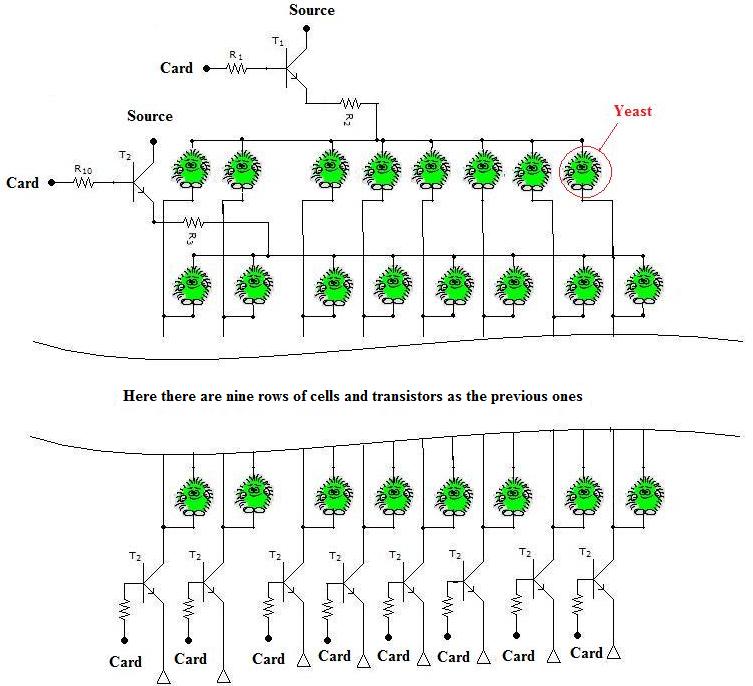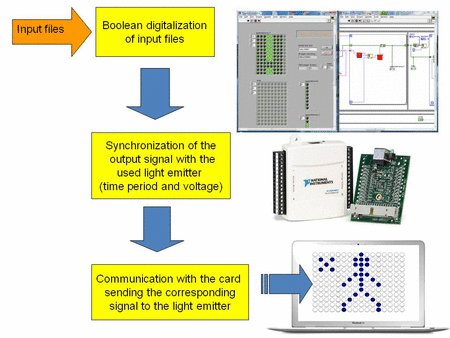Team:Valencia/Hardware/iLCD
iLCD: LEC array
We have characterized the light response of yeast to electrical pulse stimulation and according to that characterization we have established the refreshing time in approximately 10 s. (see [experimental results] section). After that, we considered to control an array 96 totally independent pixels (or cell cultures), in such a way that they can work cooperatively creating animated pictures. This system constitutes the first screen that works with living cells.
Two problems must be solve before we can have our iLCD: controlling each pixel independently and be able to control the cooperative work of each pixel according an input.
1) Building 96 pixels support.
In order to be able to send the desired voltage to the 96 outputs we substitute the soundcard as a source of voltage by a 24 channel-wide [http://sine.ni.com/nips/cds/view/p/lang/en/nid/201630 acquisition data card] able to selectively controlling the input of amplitude- and time-varying electrical pulses. As the card has 24 outputs and we want to control 96 pixels an electronic circuit allowing to control identify each pixel with the combinatorial of seven outputs has been implemented (7 outputs allow the identification of up to 128 pixels). These pulses are the signal for the coordinated switch on and off of an array of pixels (they can be Diodes, LEDs, or Cells, LECs or any other device which responds to a voltage).
2) Controling the system.
In order to be able to control the adquisiton data card in such a way that it allows a coordinate response of the different pixeles a LabVIEW program has been implemented. The program perform the following operatons: it divides each desired image (jpg file) in 96 parts. Depending on the colour intensity of each part, our program sends simultaneously through the data acquisition card (connected to the laptop through a USB port) a voltage signal that permits the activation of the corresponding pixels. An scheme of the algorithm is shown in the picture
.
The system is capable of transmiting several images to the pixels, allowing the reproduction of different black and white images resulting in animated black and blue movies.
iLCD recipe
Material you will need in order to build your own iLCD:
- a laptop
- a data acquisition card National Instruments 6501 USB (or anyone with the same characteristics)
- our LabView program
- images you want to animate
- Light Emitting Cells (LECs)
 "
"

